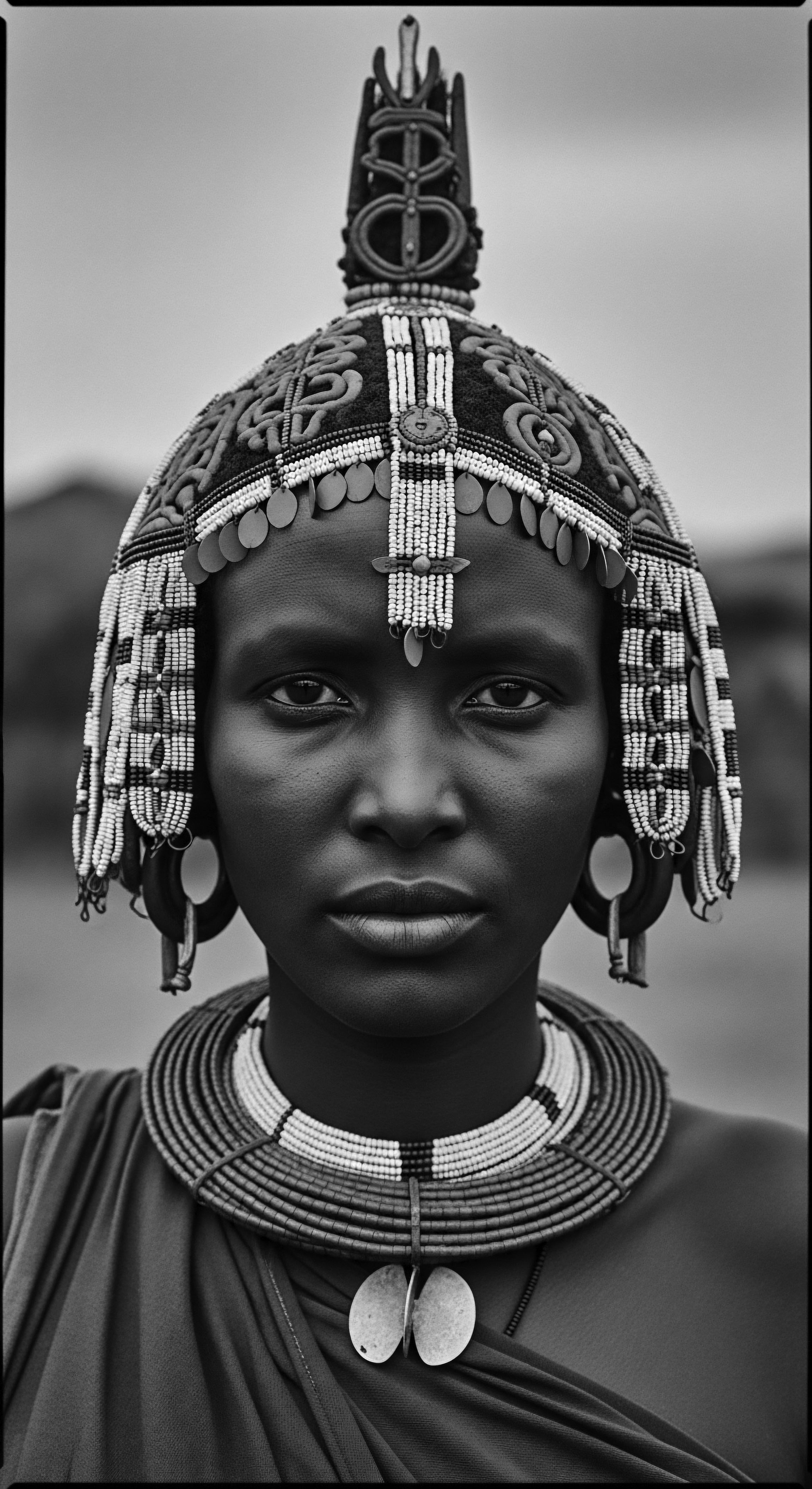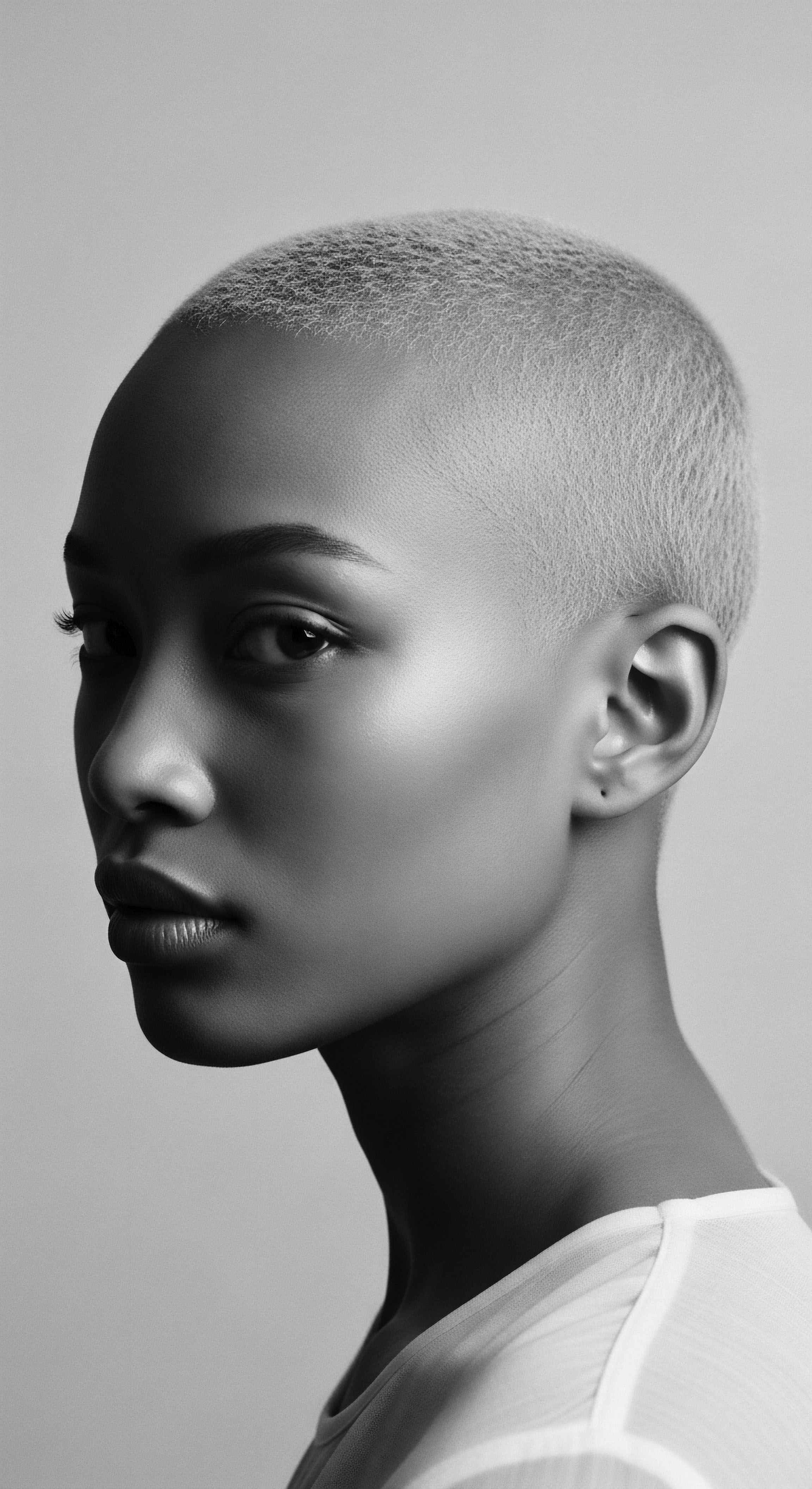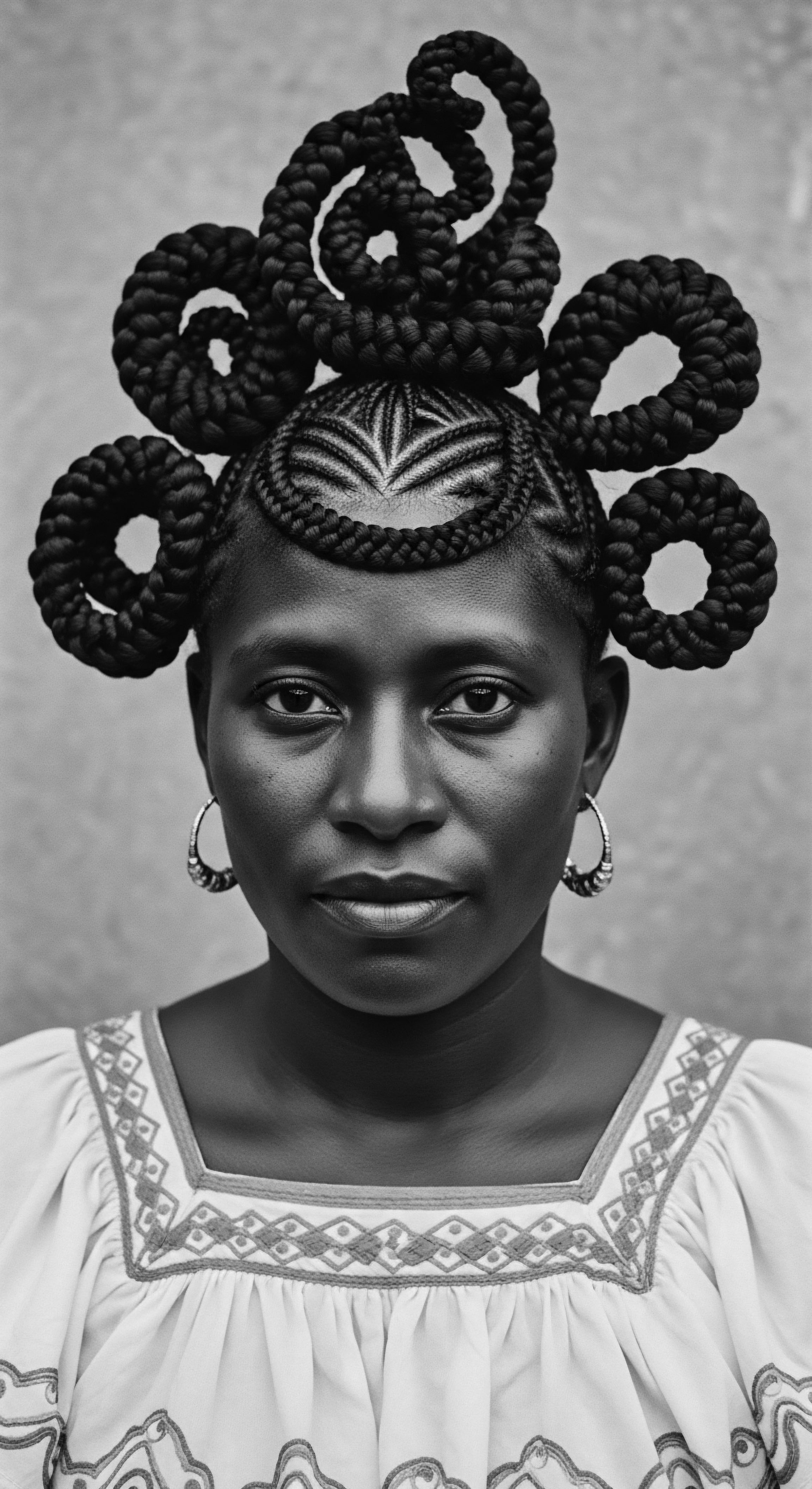
Roots
In the vibrant heart of 18th-century New Orleans, a city teeming with diverse peoples and a complex social tapestry, the hair of free women of color became a symbol of both profound cultural heritage and potent social challenge. Their elaborate, artfully styled coils and braids, adorned with jewels and ribbons, were not mere fashion statements. They represented a continuation of ancestral practices, an assertion of identity, and a visible declaration of agency in a society that sought to define and constrain them. When Governor Esteban Rodríguez Miró enacted the Tignon Laws in 1786, mandating that women of African descent cover their hair with a simple cloth, the decree aimed to diminish their perceived social standing and quell perceived threats to racial hierarchies.
Yet, this act of attempted subjugation inadvertently sparked a remarkable display of resilience, transforming an instrument of oppression into a canvas for cultural ingenuity and enduring spirit. The ancestral practices that shaped the resilience of textured hair against these laws reach back far beyond colonial Louisiana, echoing from the very source of African traditions.

What are the Ancestral Beginnings of Textured Hair Care?
The historical significance of hair care within African communities cannot be overstated. Before the brutal disruptions of the transatlantic slave trade, hair was far more than an aesthetic feature; it was a living chronicle. Hairstyles signified age, marital status, tribal affiliation, social rank, wealth, and spiritual beliefs. Intricate braiding patterns could communicate complex messages, sometimes even serving as maps for escape routes during later periods of forced enslavement.
Communities collaborated on hair styling, a communal ritual fostering deep bonds and transmitting cultural knowledge across generations. This rich legacy of hair as a language, a marker, and a sacred adornment provided a profound foundation for the care practices that would later aid in resilience.
- Oral Tradition ❉ Knowledge of hair care, styling techniques, and the properties of natural ingredients was passed down through generations, often during communal styling sessions.
- Communal Grooming ❉ Hair care was a shared activity, strengthening family and community ties, fostering a sense of belonging and collective identity.
- Symbolic Meanings ❉ Hairstyles conveyed social information, including status, age, and spiritual connection, linking individuals to their lineage and community.

How does Textured Hair Anatomy Connect to Ancient Care?
The unique anatomical structure of textured hair, characterized by its elliptical cross-section, numerous disulfide bonds, and a tendency to coil or curl, lends itself to certain vulnerabilities, particularly dryness and breakage. Ancestral practices instinctively addressed these intrinsic qualities. The meticulous braiding, twisting, and coiling techniques, along with the consistent use of natural emollients, provided inherent protection.
These methods minimized manipulation, sealed in moisture, and shielded strands from environmental stressors, creating a symbiotic relationship between the hair’s biological makeup and the care rituals developed over millennia. The wisdom of these practices, though often lacking modern scientific terminology, implicitly understood the needs of textured hair, laying a groundwork of care that would prove invaluable when challenged.
| Ancestral Practice Oiling and Butters ❉ Regular application of natural oils like shea butter, coconut oil, and marula oil. |
| Modern Scientific Understanding These ingredients are rich in fatty acids and vitamins, offering deep hydration, sealant properties, and antioxidant benefits, which fortify the hair shaft and scalp health. |
| Ancestral Practice Protective Styles ❉ Braids, twists, and cornrows, often intricate and long-lasting. |
| Modern Scientific Understanding Minimizes manipulation, reduces exposure to environmental elements, and helps retain moisture, thereby mitigating breakage and promoting length retention. |
| Ancestral Practice Herbal Treatments ❉ Use of plants like aloe vera, neem, and chebe powder for hair health. |
| Modern Scientific Understanding Many herbs possess anti-inflammatory, antimicrobial, and conditioning properties that support scalp health and strengthen hair fibers. |
| Ancestral Practice The enduring legacy of these ancestral care practices finds its affirmation in contemporary scientific understanding. |
The Tignon Laws, then, were an attempt to erase a visual heritage, to disrobe a legacy worn proudly upon the head. But the deep roots of these practices, ingrained through generations, provided a foundation of resilience that mere legislation could not sever.

Ritual
The spirit of the Tignon Laws, enacted in 1786, sought to confine expression, to obscure a visual heritage deemed too powerful. The decree commanded that free women of color in New Orleans wear a simple head covering, a tignon, supposedly to distinguish them from white women and to diminish their allure. But this attempt to enforce modesty and a rigid social order met with an unforeseen counter-movement, a defiant flourishing of cultural ritual that transformed an emblem of subjugation into a beacon of sartorial protest. The ancestral practices of hair styling and adornment, steeped in tradition and meaning, became the very instruments of this quiet rebellion, a testament to the deep-seated heritage carried by these women.

How Did Ancestral Styling Become a Form of Resistance?
African societies had long held hair styling as a sophisticated art and a significant cultural marker. Complex braiding patterns, intricate twists, and elaborate adornments spoke volumes about a person’s identity, status, and community affiliation. This profound connection to hair as a visual language was carried across the Atlantic by enslaved Africans, enduring even through the horrors of forced assimilation. During the era of slavery, some enslaved people ingeniously used cornrows to hide seeds or even to map escape routes, a silent but potent act of defiance.
This tradition of hair as a medium for communication and resistance provided the framework for the response to the Tignon Laws. Instead of merely covering their hair with plain cloth as intended, women adorned their tignons with luxurious fabrics, vibrant colors, jewels, and feathers, tying them with a skill that transcended the simple directive. They transformed the tignon from a badge of supposed inferiority into a striking fashion statement, an artistic expression of their spirit and cultural pride.
The Tignon Laws aimed to veil identity, but ancestral ingenuity instead unveiled a new form of cultural declaration.
This creative adaptation was not a superficial act. It was a continuation of centuries-old rituals where hair, and by extension its covering, was a canvas for self-definition. The styles themselves, often rooted in specific West African traditions of head wrapping, became a silent but powerful language.
The rich cultural heritage associated with head coverings in Africa, where they signified everything from marital status to spiritual reverence, imbued the tignon with a meaning far deeper than its colonial mandate. This act of transforming oppression into artistry solidified the headwrap’s place as an enduring symbol of defiance and cultural heritage for Black women, a practice that resonates strongly to this day.

What Traditional Techniques Reinforced Textured Hair through These Laws?
The resilience against the Tignon Laws was not simply about outward adornment; it was deeply linked to the underlying hair care practices that preserved the health and beauty of textured hair even when concealed. The ability to maintain intricate styles for extended periods, and the foundational health of the hair beneath the tignon, relied on knowledge passed down through generations. These techniques were essential for preserving hair health in challenging conditions, a skill that became even more critical when hair was either mandated to be hidden or, conversely, became a focal point of resistance. This continuity of ancestral care, even amidst attempts to control or erase it, speaks volumes to the enduring spirit of Black hair heritage.
- Protective Styling Longevity ❉ Techniques like cornrows, twists, and plaits, which could be maintained for extended periods, were fundamental. These styles protected the hair from the elements and reduced daily manipulation, minimizing breakage.
- Sealing Moisture ❉ The consistent use of natural oils and butters, such as shea butter and coconut oil, to seal moisture into the hair, maintaining its elasticity and preventing dryness, was a cornerstone.
- Cleansing and Conditioning ❉ Traditional methods using natural clays like rhassoul clay or African black soap, which gently cleansed without stripping natural oils, ensured scalp health and hair vitality.
The ritualistic care of textured hair, whether openly displayed or artfully concealed, thus became a quiet rebellion. It demonstrated a profound commitment to self-preservation and cultural integrity that legislative efforts could neither comprehend nor extinguish.

Relay
The Tignon Laws, though repealed in the early 1800s, left an undeniable imprint on the psyche and practice of textured hair care, transforming ancestral wisdom into a potent symbol of defiance and collective identity. The relay of this heritage, from elemental biology to living tradition, continues to shape expressions of selfhood and resilience. This final stage of understanding delves into the deeper cultural and scientific implications of these practices, revealing how the very nature of textured hair, coupled with inherited knowledge, fortified a community against oppression.

How does Modern Science Affirm Ancestral Hair Care Knowledge?
For centuries, the efficacy of ancestral hair care practices was understood through lived experience and generational observation. Today, contemporary hair science often echoes and validates this inherited wisdom, providing molecular explanations for traditional remedies. The high porosity often associated with textured hair, for instance, makes it prone to moisture loss. Ancestral methods of oiling and buttering, though not articulated in terms of lipid barriers, intuitively addressed this by sealing in hydration.
Similarly, the unique helical structure of textured hair strands means that natural oils produced by the scalp struggle to travel down the shaft, contributing to dryness. Regularly applied external emollients, a hallmark of traditional care, circumvented this biological reality. The resilience observed in historical accounts of textured hair, even under duress, was not merely a matter of spirit; it was also a product of physiologically sound care that aligned with the hair’s inherent needs.
The historical persistence of specific hairstyles, like cornrows and twists, beyond their aesthetic appeal, reveals a deep understanding of protective styling. These styles minimize daily manipulation, which is a major cause of mechanical breakage in textured hair. They also offer a shield against environmental aggressors like sun and wind, preserving the hair’s structural integrity.
This intuitive protective approach, practiced for millennia across various African cultures, served as a foundational element in maintaining hair health amidst the challenges posed by the Tignon Laws and broader systemic oppression. Such practices allowed hair to grow, to retain its strength, and to be a consistent source of pride and self-expression, even when concealed.

In What Ways Did Headwraps Become Symbols of Resistance?
The Tignon Laws, designed to visually demote free women of color, backfired spectacularly, converting a mandated covering into an unapologetic statement of identity. The headwrap, or tignon, became a “uniform of rebellion,” a powerful counter-narrative to imposed subservience. These women, with their African and Caribbean heritage, transformed simple cloth into works of art, using vibrant textiles, elaborate tying methods, and precious adornments.
This act was a direct inheritance of African traditions where head coverings held deep spiritual, social, and aesthetic significance. The ability to express wealth, status, and individuality through the tignon, even when forbidden to do so with uncovered hair, displayed remarkable defiance.
A poignant example of this layered resistance is documented in the practices of enslaved Africans in Suriname, who used the folds and patterns of their headscarves to convey coded messages, unseen and unheard by their oppressors. This historical instance demonstrates how ordinary items of dress, rooted in ancestral customs, became tools for sophisticated, nonverbal communication and continued acts of resistance. The tignon in New Orleans functioned similarly, not as a sign of degradation, but as a visual assertion of agency and enduring cultural pride, carrying forward a legacy of sartorial communication that transcended spoken words or written decrees.
The headwrap, intended as a visual constraint, became a vibrant testament to enduring spirit and cultural assertion.
The historical experience of Tignon Laws highlights a persistent pattern ❉ the policing of Black hair as a means of social control. Yet, from ancient African communities to the present day, textured hair has remained a symbol of survival and celebration. The continuity of traditional hair care, styling, and adornment practices, adapting and transforming through centuries of adversity, stands as a living archive of resilience. The ancestral wisdom woven into each strand and each wrapped tignon ensured that despite legislative attempts to erase it, the heritage of textured hair would continue its powerful relay, connecting past, present, and future generations.

Reflection
The journey through the ancestral practices that defied the Tignon Laws reveals more than historical fact; it uncovers the living pulse of textured hair heritage. Each curl, coil, and braid carries not just genetic information, but echoes of defiance, stories of resourcefulness, and the unwavering spirit of generations. Roothea’s own journey of understanding textured hair begins with acknowledging this profound lineage, seeing hair not as a mere biological filament, but as a sacred extension of self and community, a living archive. The response to the Tignon Laws, where an enforced covering became a canvas for cultural expression, stands as a luminous example of how adversity can refine, rather than diminish, identity.
It speaks to the ingenuity that transforms constraint into creation, demonstrating that true beauty and strength cannot be dictated or veiled by external decree. The enduring spirit of those who wrapped their tignons with vibrant silks and adorned them with jewels continues to inspire, reminding us that the deepest resilience is found in knowing and honoring one’s roots. This heritage, so powerfully asserted in the face of colonial mandates, continues to guide our understanding of textured hair, affirming its beauty, its strength, and its profound connection to ancestral wisdom, ensuring that the soul of a strand remains unbound, a legacy for all time.

References
- Byrd, Ayana, and Lori Tharps. Hair Story ❉ Untangling the Roots of Black Hair in America. St. Martin’s Press, 2001.
- Dabiri, Emma. Twisted ❉ The Tangled History of Black Hair Culture. Harper Perennial, 2020.
- Gould, Virginia M. Chains of Command ❉ Slave and Planter Power in the American South. Harvard University Press, 2012.
- Griebel, Helen Bradley. “The African American Woman’s Headwrap ❉ Unwinding the Symbols.” History, Heritage and Identity ❉ Selections from the 2004 International Conference of the African American Studies Association, 2005.
- Patton, Tracey Owens. African-American Hair as Culture and Commerce. Palgrave Macmillan, 2006.
- Rooks, Noliwe M. Hair Raising ❉ Beauty, Culture, and African American Women. Rutgers University Press, 1996.
- White, Deborah Gray. Ar’n’t I a Woman? ❉ Female Slaves in the Plantation South. W. W. Norton & Company, 1999.
